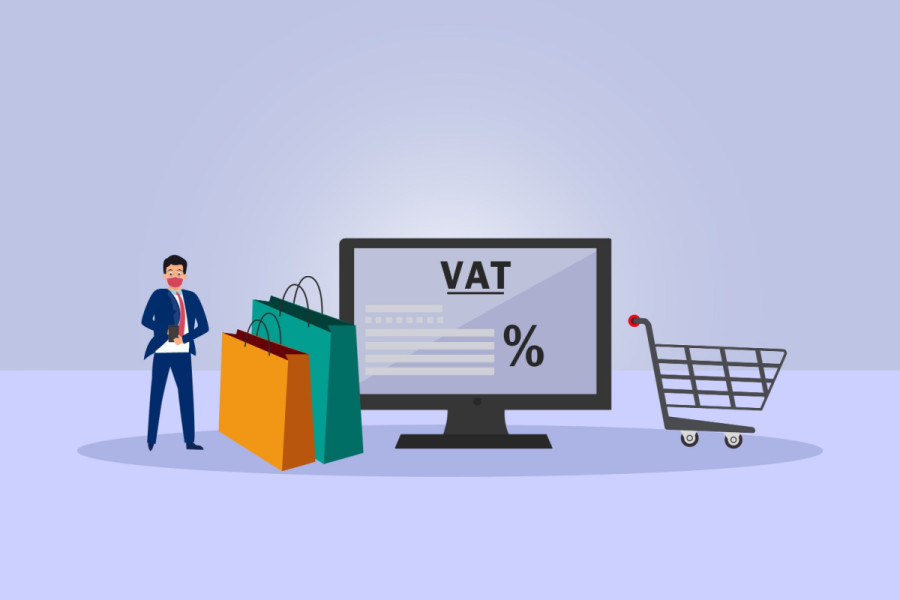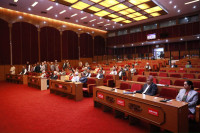Columns
Twenty-five years of VAT
Owing to past experiences with bureaucracy, nobody believed they would get a tax refund.
Rup Khadka
Nepal introduced value added tax (VAT) on November 16, 1997 to make the commodity tax system simpler and more transparent, and develop a sustainable source of domestic revenue. VAT was launched not as an additional tax but as a replacement for the then sales, hotel, contract and entertainment taxes. VAT became a major source of revenue right from its first year, generating Rs7.12 billion in fiscal 1997-98. The government expects to collect Rs400 billion in VAT in the current fiscal year 2022-23.
This tax currently accounts for about one-third of the total tax revenue. The VAT revenue-to-GDP ratio increased from 2.5 percent in 1997-98 to 6.8 percent by 2021-22. This ratio is much higher than in other South Asian countries except the Maldives.
The VAT C-efficiency ratio was 0.46 percent in 2021-22. This means more than half of the potential VAT base is still outside the tax net due to large exemptions and poor administration. If these issues are corrected, the government can boost VAT collection by another Rs200 billion.
Registration is the first step in the implementation of VAT. In 1997, the first year of VAT, 2,045 sales taxpayers and 5,209 taxpayers were registered. The number of VAT registrants had reached 290,441 as of the end of fiscal 2021-22.
VAT-registered taxpayers are required to file their returns every month. These returns may be debit returns (showing tax liability to pay to the government), credit returns (showing tax to be claimed from the government), or zero returns (showing no taxable transactions). As a rule, most of the returns should be debit returns as businesses are carried out to earn profits, where total sales should be higher than the total purchases, a situation showing tax to be paid by a taxpayer to the tax administration. However, in 2021-22, debit returns constituted only around 11 percent of the total returns, while the share of credit returns and zero returns was 58.81 percent and 30.16 percent respectively. This situation is very critical and needs to be improved urgently. About 30 percent of the taxpayers did not file their returns on time in 2021-22, and this also has to be corrected. The non-filer percentage must be brought down to single digits in general, and around 1 percent in the case of large taxpayers.
VAT refund
VAT refund is an important element of the system. If the tax paid on purchases or imports exceeds the tax collected on sales, the VAT registrant can adjust the difference in the following month. If the extra amount cannot be adjusted for four consecutive months, the VAT registrant can get a refund of the excess amount. But an exporter can claim an immediate refund of the tax paid on purchases or imports. Tax refunds must be made within 30 days of receipt of the claim for exporters and within 60 days for other taxpayers. If a refund is not made within the specified dates, the government has to pay 15 percent interest on the outstanding amount.
Owing to past experiences with the bureaucracy, taxpayers did not believe they would actually get a tax refund even a year after VAT was launched. As a result, nobody claimed tax refunds in the first year of VAT. The government then started a publicity campaign to convince taxpayers, and their belief in the system gradually increased. In fiscal 1998-99, almost Rs70 million was refunded. In 2021-22, taxpayers had claimed Rs10.05 billion in refunds out of which the tax administration approved Rs4.22 billion.
Even though the refund system has now been well established, the percentage of refunds compared to total collection is far below international levels. For example, VAT refunds in 2021-22 made up only 1.29 percent of the total VAT collection that year. VAT refund is about 11 percent of total VAT collection in low-income countries and as high as 35 percent in high-income countries. This shows the need to implement VAT in a simple, transparent and effective manner.
Billing system
Nepal has adopted an invoice-based VAT system where invoices play a crucial role in the successful implementation of VAT. However, a proper invoice system is yet to be established. Some taxpayers do not issue invoices, some do not issue proper invoices, and some businesses charge 13 percent more if you ask them for an invoice. It is critical to establish a proper invoice system through a series of promotional, regulatory and punitive measures.
While VAT has been successful in generating large amounts of revenue in the 25 years of its existence, its progress has not been satisfactory in some functional areas, including registration of small businesses, filing and refund. Besides, the VAT invoicing mechanism has not been implemented effectively. Further, more than half of the potential tax base has not been brought under the tax net due to a large number of exemptions and poor tax administration. It is, therefore, necessary to reduce exemptions, strengthen tax administration, and implement the invoicing system effectively. This will lead to additional revenue that will help to finance development activities and social security programmes for the poorer and weaker sections of society.




 8.12°C Kathmandu
8.12°C Kathmandu















